A Shift From Traditional Materials To Flex Packaging
Leave a Comment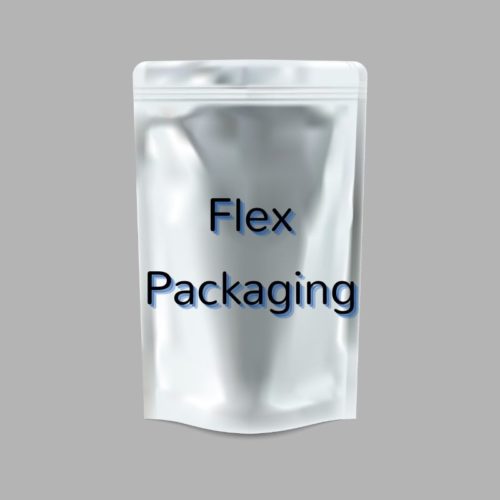
Flexible packaging, or flex packaging, is exactly that, packaging that is literally flexible, capable of bending without breaking. There are many types of flexible packaging such as bags, pouches, and wrappers. The next time you see potato chip bags, juice pouches, even the wrappers around granola bars, these are all examples of flexible packaging.
Flexible packaging can be used as primary packaging, which actually touches the product and holds the product like the potato chip bag. It can also be secondary packaging, where several pouches can be packed into a larger flexible bag for shipping and handling. Flexible packaging can be made of a variety of materials such as plastic, foil, paper, or film and comes in various forms such as bags, pouches, liners, sleeves, wraps or rollstock.
Many companies are shifting from traditional rigid packaging forms such as cardboard boxes to flexible packaging due to the many benefits it provides.
Benefits of Flexible Packaging
The flexible packaging industry continues to increase in popularity due to the many advantages achieved when replacing rigid pack formats. According to the Flexible Packaging Association, flexible packaging continues to grow as one of the fastest growing packaging segments in the country. One of the biggest reasons is the sustainability of flex packaging.
Sustainability Throughout The Entire Product Lifecycle
More sustainable to manufacture – flexible packaging has a more positive impact on the environment than rigid pack forms, resulting in less usage of fossil fuels, less greenhouse gas emissions and water usage than other packaging forms.
Cost-efficient transportation – because flex packaging materials can be shipped on large rolls, or several plastic bags packed flat for transportation, many more types of flexible packaging can be shipped at once over traditional boxes. Due to the light weight of flex packaging, it is much more cost-efficient to transport than rigid packaging. This also means that more packaging types can be delivered in one truck, which cuts down on deliveries and CO2 emissions.
Higher ratio of product-to-package – the product to package ratio is a measure of material efficiency and helps determine the weight of the entire package versus the weight of the product. Flexible packaging provides a higher product to package ratio when compared to other packaging formats.
Provides protection to products – flex packaging protects products against scratches or dents, prevents contents from spilling and helps reduce spoilage.
Increases shelf life – flex packaging helps to reduce food waste by extending the shelf life of many types of food and perishable items.
Source reduction – source reduction is one of the top activities a company can do to reduce waste. Flex packaging allows for companies to receive larger quantities of packaging materials at once, which cuts down on the amount of deliveries needed and also reduces the amount of storage space required.
These are some of the most important benefits and the main reasons for the shift from traditional to flex packaging. Speak with an experienced contract packaging company to learn more about your options for switching from rigid to flex packaging.
Contract Packaging Company Offers Flex Packaging Solutions
Peoria Production Solutions, PPS, is a leading Midwest supplier of secondary packaging solutions with more than 80 years of experience. PPS offers wrapping and packaging services for companies of all sizes including Fortune 100 companies. We offer a highly skilled staff trained in wrapping, shrink wrapping and various types of packaging. We utilize automated packing equipment such as auto bagging, bag filling, and more.
PPS invests in our staff through continual training and development and enjoys a committed team with less than 3% overall employee turnover. In the midst of a widespread labor shortage, PPS is in the unique position to provide reliable packaging services to meet your production and delivery needs.
PPS offers a wide range of production solutions including packing, bag and pouch filing, wrapping, cello wrapping, shrink wrapping and more. We have the staff, the resources and capacity to customize packaging solutions to meet your needs. Contact us to learn more about improving your supply chain with a leading contract packaging company experienced in flex packaging solutions.
How to Increase Your Warehouse Capacity
Leave a Comment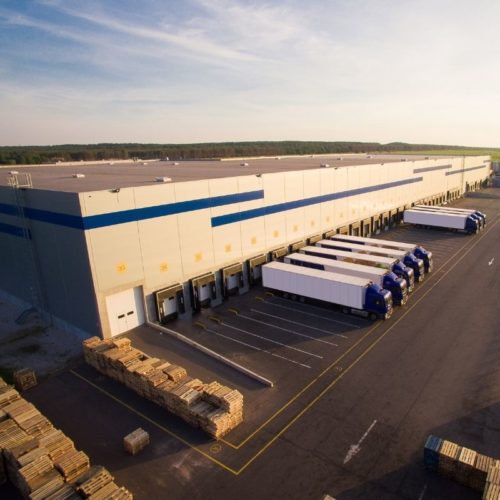
We all know that time is money, if you are wasting time you are not creating value. The same can be said for space. Manufacturers, logistics providers, and warehouse facilities know this all too well. It can be a fine line between optimizing your capacity versus over or under utilizing your space. Companies need ample space to store inventory, both purchased raw materials and processed finished goods, room for staff to safely maneuver, and the capacity to support continued growth.
So how do you optimize your warehouse capacity? There are some basic exercises and things that companies can do to make sure they are utilizing their production and storage space to the fullest potential. Doing a thorough evaluation of your warehouse utilization, evaluating the entire floor space layout, evaluating your packaging materials, and doing some housekeeping are some basic things you can try internally. Many companies are finding that they can save money by outsourcing to a contract packaging company.
Here are some of the most effective things to do to improve warehouse utilization and increase capacity.
Evaluate Your Warehouse Space Utilization
Believe it or not, you do not want your warehouse utilization to be very high. You want to break down your total warehouse space and your available storage space into cubic feet. To calculate your available storage space, measure the size of all of your pallet and storage racks to vertical storage capacity in cubic feet. Let’s say your total available space is 2,000,000 ft.³, and your available storage space is 500,000 ft.³, that gives you a storage utilization of 25%. This is actually a pretty good number as you know that there is plenty of room for adequate aisle space and room for your employees to maneuver.
Evaluate Warehouse Layout
With more efficient operations and organized storage, you open up floor space for other, profitable, operations. Consider the layout of your entire facility and make sure that all processes from receiving, to production, packing, storage and shipping follow a lean flow of materials. Ideally, products do not cross paths. Receiving docks are on one end of the building, where vendor materials are received, recorded and properly stored. When needed, they are moved efficiently to a production or packing area, depending on the process. From there, following the same flow, products are packaged or re-packaged, labeled, and shipped, without backtracking through the flow to get there.
Clear the Clutter
Clearing the clutter is a big part of lean operations going back to the Toyota Way and six Sigma practices. It’s proven that cleared pathways and organized storage significantly improve efficient operations, and as we said before…time is money. Literally everything has its place, and everyone should know exactly where to find it. This includes everything from work instructions to materials and even cleaning supplies.
Doing regular housekeeping does a lot more than improve the appearance of your facility, the efficiencies gained translate into dollars and an improved bottom line.
Evaluate Your Packaging
Evaluate all your packaging to be sure your boxes fit your products, without using larger boxes than necessary. This extra space really adds up to affect total capacity and costs added weight and dimension, and more money with packing filler material to protect your goods.
Consider a Contract Packaging Company
Many companies are saving money today by utilizing a contract packaging company. Peoria Production Solutions, PPS, provides packaging solutions to a wide range of business sizes and industries. We have been providing secondary production solutions including professional secondary packaging services for more than 80 years. PPS offers an experienced and trained staff dedicated to a job well done and providing high-quality products with quick turnaround.
PPS is a leading Midwest provider of many production solutions including kitting, assembly, wrapping and packaging. We work with our customers to provide customized, cost-efficient solutions that improve their product and process. Contact us to learn more about how to improve your warehouse capacity with the services of an experienced contract packaging company.
3PL- Contract Packaging Is Part of Your Logistics
Leave a Comment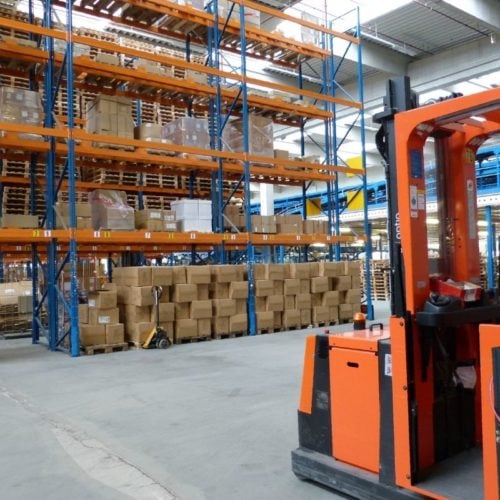
How does contract packaging support 3PL? Let’s first understand what this term we’ve been hearing more of really means. 3PL is a term that means Third Party Logistics and has become increasingly popular with the rise in online ordering and subscription services. 3PL providers offer inventory management, warehousing, and order fulfillment for companies, allowing businesses to focus on their core capabilities instead of picking, packing, and shipping.
3PL providers take a lot of responsibilities with managing the logistics of order fulfillment off the hands of businesses. 3PL providers utilize automated technologies such as sophisticated warehouse management software and equipment to precisely sort and track products throughout their entire process. Full accountability of customer supplied products is an absolute must.
As every job is unique with specific packaging requirements, a 3PL provider may also provide the packaging or outsource to a contract packaging company.
Contract Packaging Companies Support 3PL Providers
Contract packaging companies provide a wide range of packaging services from simply receiving customer product, packing, and labeling in corrugated boxes to assembling full kits of products in display ready packaging. When secondary packaging services are required, an experienced contract packager may provide valuable insight and services to 3PL providers and businesses seeking 3PL services.
An experienced contract packager is familiar with all types of packaging materials and dunnage. Dunnage is the term that refers to the many types of packing filler materials like bubble wrap, crinkle paper, Styrofoam fillers like blocks and planks and other packing materials that help to support products through shipping and handling. From safely packaging materials in corrugated with dunnage to carefully assembling multiple components in display ready kits, a contract packager can do it all.
Experienced Secondary Packaging for Companies and 3PL Providers
Peoria Production Solutions, PPS, offers customized contract packaging services such as packing, repackaging, bag filling, auto bagging, bottle labeling, stretch wrapping and palletizing. We provide solutions for companies of all sizes with a highly skilled and trained staff, automated packaging equipment, the resources and capacity to meet custom packaging requirements. As an ISO9001:2015 registered contract packager, we provide quality services and finished products, on time with competitive pricing.
PPS is a not-for-profit company with more than 80 years of experience in building a dedicated staff with less than 3% employee turnover. Our focus is on jobs, not profits, as we provide employment to persons with alternate abilities and provide opportunities to realize their full potential. We provide quick turnaround time of high quality products from a staff committed to meticulous attention to detail.
PPS is experienced with all types of packaging material and various secondary packaging services, offering cost-efficient solutions for companies of all sizes, including Fortune 100 companies. We provide high quality secondary production services with quick turnaround time. Contact us to learn how our contract packaging services can help support your 3PL logistics needs.
Benefits of Working With A Contract Packaging Company
Leave a Comment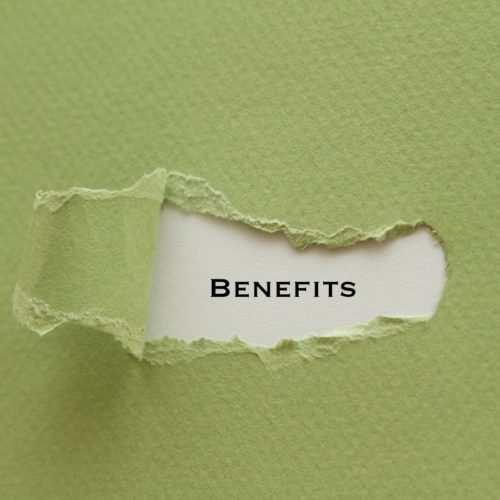
Packaging is an important part of any manufacturing process, although packaging today has more purpose than just storing or shipping your goods. Packaging plays a critical role in a company’s marketing strategy and brand recognition. Working with a contract packaging company provides many benefits such as cost efficient logistics, improved brand awareness, and many other advantages.
Here are some of the top benefits of working with a contract packaging company.
Less capital investment
Contract packaging companies are experts in the art of packaging as that is their niche.
They already have the staff, the capacity, equipment, and supplies to efficiently package your products. This saves the manufacturer from investing in automated packing equipment, training staff, and devoting resources to a secondary process outside of their niche manufacturing.
When a company adds up all of the expenses devoted to packaging, they could very well realize that a contract packager not only provides a quality product with a quick turnaround time, but also at a lower cost than what they are spending now.
Increased internal capacity
By outsourcing packaging, the company can devote floor space and staff to their manufacturing process and increase their internal capacity. Some companies devote a lot of time training staff on proper packaging methods only to experience high turnover which seems like a never ending training process. Manufacturers can eliminate this headache of hiring and training by outsourcing packaging. Outsourcing packaging allows companies to devote floor space to the profitable part of their business, manufacturing their unique products and goods.
Improved flexibility
Most manufacturers do not have the time or staff to investigate various packaging types, creative or cost-saving options. An experienced contract packager can make recommendations on cost-efficient packing material and options for secondary packaging. Contract packagers have experience in kitting, assembly, and packaging goods in beautiful, display ready packages. A contract packager can offer cost-efficient suggestions that improve your product image while also saving money.
Quick turnaround time
Contract packagers are skilled in meeting tight deadlines and providing quick turnaround time. Many manufacturers today operate in a just-in-time environment, receiving their materials just in time for production which requires fast production and shipping. Skilled packagers can accommodate these tight deadlines to help companies maintain or improve their on-time shipping statistics.
Smart option for seasonal packaging
Many companies experience seasonal production and would have to make added investments to package the additional product. Contract packaging is the perfect solution for seasonal production and allows companies to produce to their capacity while experienced packagers finish the job.
These are just some of the benefits of working with a contract packaging company. You can experience all of these benefits and more with Peoria Production Solutions.
Contract Packaging Solutions with Value-Added Benefits
Peoria Production Solutions, PPS, has been providing contract packaging services for more than 80 years. We are a fully sustainable, not-for-profit company, focused on providing jobs rather than profits. This puts us in the unique position to offer greater flexibility to our customers to meet their budgetary needs.
PPS is a leading Midwest supplier of secondary production solutions including packaging, kitting, assembly, bagging, filling, commercial sewing and more. We offer competitive secondary packaging services over traditional contract packaging companies. Contact us to learn more about the many benefits of working with an experienced and professional contract packaging company.
Top 5 Ways to Reduce Your Packaging Costs
Leave a Comment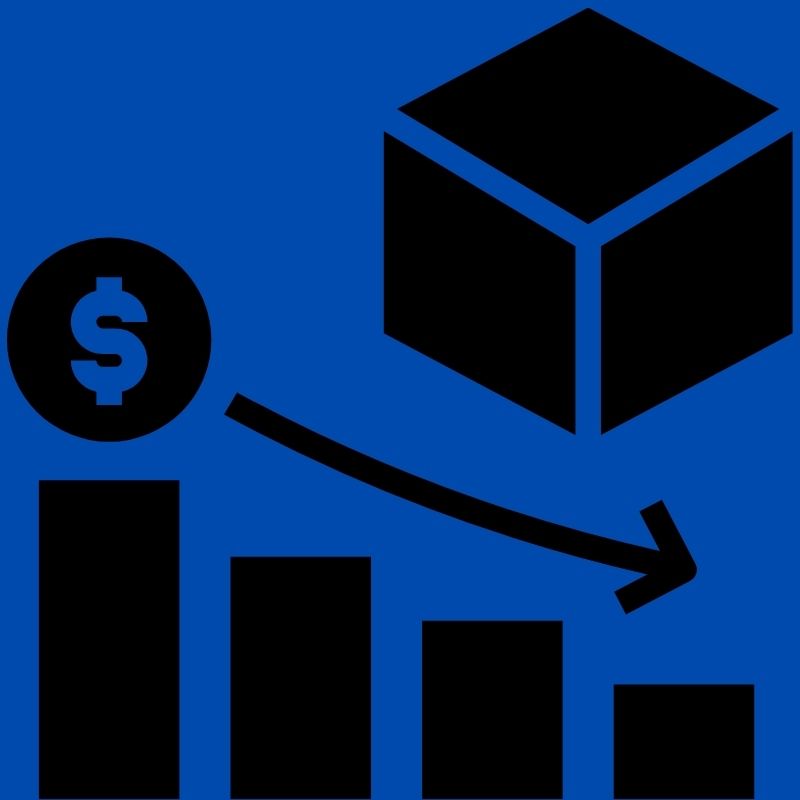
Packaging costs include the expenses for various packaging materials as well as all required labor and are an important part of overall production costs. Packaging is an integral part of producing products, whether manufacturers are shipping corrugated to other companies or creating beautiful packaging to appeal to consumers. For business to consumer (B2C) companies, appealing to consumers with colorful packaging and catchy phrases might be what sells their product the first time, but the quality of product inside is what creates future sales.
Packaging is unavoidable, but there are things that companies can do to reduce their expenses without jeopardizing product quality or brand recognition.
Factors That Contribute to Higher Packaging Expenses
Analyzing your overall packaging expenses periodically is definitely a worthwhile exercise that can deliver significant cost savings. New materials may have come on market since you last evaluated your packaging process or there may have been advancements in automated equipment. Considering outsourcing your packaging to a contract packager is another option to save money and maintain product quality.
Whatever your analysis reveals, looking at your packaging with a holistic view of your current processes including all purchasing and storage of materials, labor expenses, cost of automated equipment, and footprint of packaging work areas that take up capacity is the only way to know your true packaging costs. When you take a good hard look at all of your packaging expenses, you will discover valuable cost-saving opportunities that increase your bottom line.
Factors that contribute to increased packaging costs include:
- Bottlenecks in the packaging process
- Inefficient storage and retrieval of packaging items
- Ineffective packing materials that allow damage
- High shipping costs
- Using larger packaging boxes the necessary
How to Reduce Your Overall Packaging Expenses
Here are some things you can do to reduce your packaging expenses:
Evaluate purchasing and inventory of packaging materials – obviously, cost comparisons must be completed to compare vendors for the many packaging materials used in your packaging processes. Packaging materials include a wide variety of items with many types of each item in various categories such as:
- Corrugated boxes of various sizes
- Sealing materials such as tape and shrink wrap
- Plastic bags of all sizes with various features such as zip lock, adhesive or drawstring closure
- Packing paper such as brown paper or crepe paper
- Packing materials for stuffing such as Styrofoam, filled air bags and bubble wrap
Check price comparisons and check inventory reports and return on inventory analysis to ensure your purchasing processes are efficient.
Consider the layout of your warehouse – evaluate the layout and flow of goods throughout the warehouse to look for inefficiencies such as any backtracking from receiving through shipping.
Improve packing time with automation – automating your packaging line will increase your output with improved picking and packaging, improve your brand recognition with precise, perfectly packaged products, and reduce your carbon footprint as automated systems use only the exact amount of material needed.
Use smaller boxes – using boxes larger than necessary for your product is one of the biggest money wastes in packaging.
Outsource to contract packager – speak with a contract packaging company and you might be surprised when you compare your current total packaging expenses to that of a contract packager. Outsourcing your packaging allows your business to focus on your niche market and devote floor space to what you do best.
Peoria Production Solutions offers contract packaging services with more than 80 years of experience and a highly skilled staff. We utilize automated packaging equipment and provide many secondary services such as bag filling, bottle labeling, auto bagging, palletizing, and more. Contact PPS, an ISO9001:2015 registered company and set apart from other contract packaging companies to provide the greatest value with high quality service that can reduce your packaging costs.
Primary, Secondary and Tertiary Packaging Explained
Leave a Comment
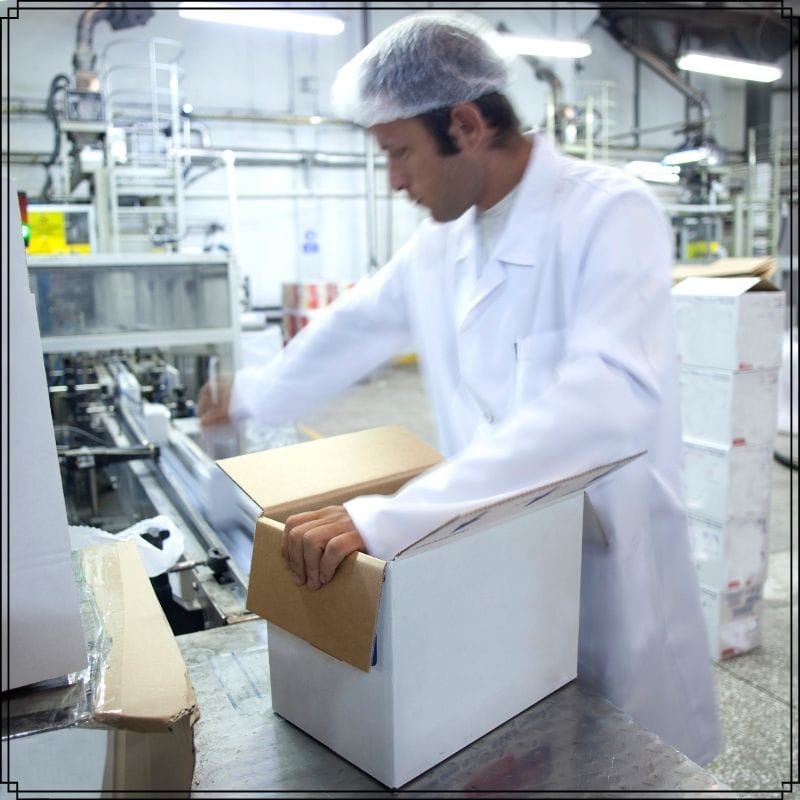
Types of Primary Packaging
Primary packaging includes packaging materials that come into direct contact with the product that you are selling. Primary packaging protects or preserves your goods for optimal condition until removal. The first layer of packaging that contains your finished product such as the plastic bag that holds cereal inside the box would be the primary packaging. Another example of primary packaging would be a small glass bottle that contains oil or tincture. These small glass bottles would be packaged into a cardboard retail box, which could arguably be primary packaging but also serves the function of secondary packaging.
Primary packaging for fast-moving consumer goods would be a bag, pouch, foil bag, bottle, can, or jar.
Types of Secondary Packaging
Secondary packaging pulls all primary packaging forms together into a single product such as group packaging. Secondary packaging would be a large box or container that holds several smaller boxes that make it easier for storage or shipping. Secondary packaging is designed to optimize efficiency and typically contains a specific number of units. Types of secondary packaging help to maintain the integrity of primary packaging and are highly useful for e-commerce. Secondary packaging typically includes multiple components such as separators, padding, and reinforcements.
Types of Tertiary Packaging
Tertiary packaging is to secondary packaging, what secondary is to primary packaging. Tertiary allows for safe and efficient movement of secondary packaged products at scale. Tertiary packaging ensures that minimal space is used during storage and protects products from environmental hazards. Tertiary packaging should allow for efficient movement like with forklifts or pallet jacks.
This type of packaging may also be referred to as transit or bulk packaging, typically used to group larger quantities of products for transportation from one point to another.
Secondary Packaging Provider Makes All the Difference
Working with an experienced secondary packaging provider makes a big difference in not only the safety and security of your products but for marketable, display ready packages. An experienced packaging provider like Peoria Production Solutions, PPS, can offer suggestions as to the best type of secondary packaging for your product and provide customized packaging services to meet your specific needs.
PPS offers a wide range of secondary packaging services including POP display, clamshell packaging, sample kits, club packs, kit assembly, cello wrapping, pouch and bag filling, gift set packaging, and repackaging. PPS offers more than 80 years of experience in providing customized packaging solutions with a skilled and experienced team dedicated to your total satisfaction.
Peoria Production Solutions is a leading Midwest provider of secondary production and packaging solutions. We follow a strict quality policy with top-down involvement, investing in our staff with ongoing training and personal development. Contact us to learn how to improve your supply chain with an experienced secondary packaging provider on your team.

